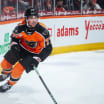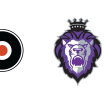As the Philadelphia Flyers approach the NHL’s holiday break, pundits around the league have started to notice what the team’s been up to over the last five weeks. The Flyers have earned a 13-3-2 record (28 points) since November 10, which is the most in the league in that timeframe despite ranking 21st in the league in goals scored during that stretch with 52. The key there is they’ve allowed just 40 goals, which is the third-fewest.
One of the reasons for that impressive stat is an even more impressive one – the team’s penalty kill rate. Over these 18 games since November 10, the Flyers are 89.7 percent on the penalty kill, which is the best in the league in that time. The Flyers have been shorthanded on 58 occasions and have killed off 52 of them. They’ve given up six power play goals, but have made up half of that by scoring three shorthanded goals.
None of this is much of a surprise to people who’ve been paying attention to how John Tortorella and his staff have built this team over the last 14 months. Most of the 2022-23 season was spent focusing on how the team played defensively. When all of last year’s returners arrived this year with that development time already put in, the defense quickly turned into a highlight of the team’s play.
The penalty kill is an extension of the defense, but that too finds its roots in last season. Here’s a look at how this unit has now become a significant factor in the team’s current success.
PERSONNEL
A year ago, the Flyers didn’t have enough penalty killers. They were playing without Cam Atkinson and Sean Couturier, and a couple contributors from the previous season had moved on. Noah Cates saw his time on the kill increase exponentially as part of the role he took on in Couturier’s absence. But they needed more help.
Enter Travis Konecny, who had never been on a penalty killing unit. A year ago Thursday, Konecny scored his first career shorthanded goal. It was off an assist from Scott Laughton, who knocked a puck to center that Konecny tracked down. He carried it into the zone, rendered Marcus Bjork ineffective, and beat Daniil Tarasov for the game’s first goal.



















